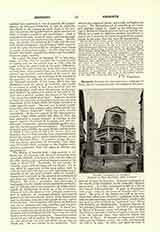

Grosseto, Diocese of (GROSSETANA), suffragan of Siena, has for its episcopal city the capital of the province of Grosseto in Tuscany. Grosseto is situated at the mouth of the Ombrone, in the unhealthy Maremma country. It is first mentioned in 803 as a fief of the Counts Aldobrandeschi. It grew in importance with years, owing to the decay of Rusellae and Vetulonia. The ruins of the former are still to be seen, about five miles from Grossetocyclopean walls four miles in circumference, and sulphur baths, which in the last century were restored for medicinal uses. There was formerly an amphitheatre. Grosseto was one of the principal Etruscan cities. In 1137 it was besieged by Henry of Bavaria, envoy of Lothair III. In 1224 the Sienese captured it and were legally invested with it by the imperial vicar; thus Grosseto shared the fortunes of Siena. It became an important strong-hold, and the fortress (rocca), the walls, and bastions are still to be seen. In 1266, and again in 1355, it sought freedom from the overlordship of Siena, but in vain. The Romanesque cathedral was completed in 1295 and restored in 1846. It was the work of Sozo Rustichini of Siena. The facade consists of alternate layers of white and black marble. The campanile dates from 1402, and the wondrously carved baptismal font from 1470.
Rusellie was an episcopal city from the fifth century. St. Gregory the Great commended to the spiritual care of Balbinus, Bishop of Rusellae, the inhabitants of Vetulonia. In 1138 Innocent II transferred the see to Grosseto, and Rolando, Bishop of Rusellae, became Bishop of Grosseto. Among his successors were: Fra Bartolommeo da Amelia (1278), employed by the popes on many legations; Angelo Pattaroli (1330), a saintly Dominican; Cardinal Raffaele Petrucci (1497), a native of Siena and lord of that city, hated alike for his cupidity and his worldly mode of life; Ferdinand Cardinal Ponzetti (1522), a learned man, but fond of wealth; Marcantonio Campeggio (1528), who was distinguished at the Council of Trent. From 1858 to 1867, for political and economical reasons, the see remained vacant. The diocese contains 26 parishes and numbers 30,250 faithful. It has two religious houses and one convent for girls.
U. BENIGNI

